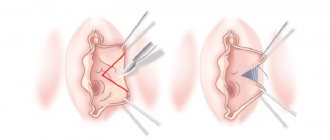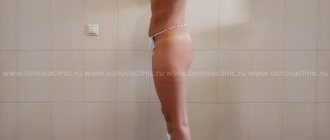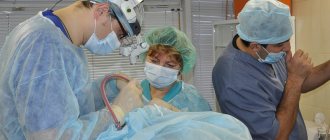Our voice is our main communication tool. Thanks to it, we convey the necessary information to others, we can express our own opinion on a particular issue. For some, the voice has become an integral part of the profession and a means of earning money (for example, for singers or announcers).
But our voice is not always resonant and loud. Like any other human organ or system, our vocal apparatus can malfunction.
The condition when the voice shrinks and becomes hoarse is called dysphonia in medicine. Temporary loss of voice is called aphonia.
A missing or dry voice becomes a real problem for a person, especially if he is a representative of the speech profession.
Make an appointment right now!
Call us by phone or use the feedback form
Sign up
Why do such problems arise? What treatment will quickly and effectively eliminate them? What preventative measures will help avoid the occurrence of aphonia in the future? You will find answers to these and other questions in our new article.
Surgical treatment of the larynx
The larynx has peculiarities of location and structure, which makes inflammatory processes in it dangerous. The presence of a glottis with ligaments in the lumen of the larynx is especially important. This is the narrowest point in the area of the entire breathing tube. If acute inflammation develops, or a chronic process progresses, in which swelling of the mucous membrane and proliferation of connective tissue are pronounced, laryngeal stenosis is possible. In this case, surgical treatment may be required - resection of the vocal folds or decortication. During the intervention, the doctor removes the tissue growth with micro-instruments in order to preserve the anatomical structure of the ligaments as much as possible. The doctor removes the altered zone of the epithelium, including the transition zone, but preserves the submucosal layers.
Vocal cords
The vocal cords are the section in the respiratory tract responsible for speech function. When they are affected, voice loss or decrease occurs, and the airways may also become blocked.
Most often, such disorders are observed in adults, especially in persons whose activities are directly related to the use of speech function - singers, rectors, announcers, and so on.
Also, the vocal cords can be damaged by various pathologies of an infectious or non-infectious type or as a result of injury.
The photo shows pathologies of the vocal cords that are treated surgically
Indications and contraindications
There are situations when only conservative methods of treating laryngitis are not sufficient, then surgical interventions are used. These are phlegmonous, hyperplastic forms of the process or edematous-polyposis. In addition, abscesses in the larynx with the development of phlegmon of the neck, which can threaten mediastinitis, are dangerous. In addition, removal of the vocal folds is indicated when cancerous processes are detected.
Decortication is indicated for edematous-polyposis and hyperplastic laryngitis, neoplasms of folds - hyperkeratosis, polyps, granulomas, papillomas.
Contraindications to surgery are determined individually. This may be a severe general condition, intolerance to anesthesia and anesthesia, decompensation of cardiac or pulmonary function, liver and kidney problems.
Indications for surgery
Surgery is performed when conservative therapy has been tried. If this turns out to be ineffective, then surgical intervention is used. The main criteria for carrying out this kind of manipulation:
- Loss of complete or partial voice;
- Labored breathing;
- Airway obstruction;
- Improving or strengthening your voice.
Indications may vary depending on other factors, such as the presence of serious systemic pathologies or age restrictions.
Indications for surgery on the vocal cords:
Types of operations
With various pathologies (impaired lymphatic outflow, inflammation, damage), the area of loose tissue in Reinke's space swells greatly, the vocal folds acquire a gelatinous consistency, their vibration is disrupted during conversation, the voice is disrupted up to complete aphonia. In addition, there is a sharp narrowing of the lumen of the glottis, which leads to difficulty breathing. In these cases, vocal cord decortication surgery performed according to Hirano is indicated. The doctor makes an incision along the lateral edge of the vocal cords themselves, and then with a special instrument removes gelatinous masses, excess tissue and applies sutures.
If the process is caused by tumor growths in the area of the mucous folds of the larynx, and not by the formation of edema, then the neoplasm must be removed in one common block to the boundaries of healthy tissue, without involving the Reinke space. This is the Kleinsaster decortication technique.
Voice change surgery
Operation to change the voice Voice change operations, operations on the vocal cords are microsurgical interventions that are performed when the movement of the vocal cords is impaired and for various pathological changes in the tissues of the vocal cords, as well as when new formations occur in the vocal cords.
Pathological changes in the tissues of the vocal cords and disturbances in the movement of the vocal cords can lead to complete loss of voice, or to hoarseness or hoarseness. In these cases, surgery may be recommended - surgery to change and correct the voice.
Before undergoing an operation to change and correct the voice, the patient needs to familiarize himself with the indications for this procedure, the technique of its implementation, methods, the preparatory period and the rehabilitation period, as well as contraindications, possible complications and undesirable consequences.
Benefits of vocal cord surgery:
1. surgeries to change the voice are minimally invasive techniques, that is, they are low-traumatic, allow you to get an optimal result with minimal risks for the patient, and also do not violate the integrity of the larynx;
2. modern high-precision equipment - voice change operations are carried out using microsurgical and microscopic equipment.
Indications for operations to change and correct voice are:
1. neoplasms of the vocal cords, polyps, oncological tumors,
2. scars resulting from injury to the larynx,
3. granulomas, polyps, cysts, tumors and nodes on the vocal cords,
4. restoration of the patient’s speaking capabilities, reduced after the removal of any tumors that are removed using microwave, laser radiation or surgery,
5. complete or partial paralysis of the vocal cords,
6. age-related changes in voice modulations,
7. with a high-pitched voice in men and a rough-sounding voice in women. It is possible to make the timbre of the voice lower or higher using notches on certain points of the vocal cords,
8. expanding the sound range or eliminating the consequences of periodic overstrain of the vocal cords, singing injuries, treatment of excess load on the voice,
9. hoarseness or hoarseness of the voice, especially in smokers,
10. reduction in the aesthetic appeal of the voice,
11. difficulty breathing, as well as when obstruction of the respiratory tract occurs.
Thus, the need for operations to change the voice is determined primarily by medical indications: it is necessary to restore the voice and its quality.
But the operation can also be performed if you don’t like your voice. This fact can cause psychological discomfort to the patient, as well as interfere with communication or performance of professional duties.
Contraindications. Surgeries on the vocal cords are contraindicated in cases of serious health conditions: cerebral stroke, coma and myocardial infarction. Also, contraindications to operations to change the voice are: epilepsy, problems with hematopoiesis (blood is too thick), hemophilia, chronic diseases in the acute period, various infections or inflammatory processes in the body (ARVI, colds), pregnancy and lactation, genetic disorders, autoimmune diseases - AIDS, as well as diabetes and lupus erythematosus.
Preparation for surgery: in preparation for the upcoming operation, the condition and functionality of the vocal apparatus is examined, the pitch of the voice and volume range, and timbre of the voice are assessed.
1. On the eve of the operation, careful preoperative preparation of the patient is carried out, a comprehensive assessment of the patient’s health status is carried out, which makes it possible to identify the presence of possible contraindications to the operation and the individual characteristics of the clinical picture of the disease.
2. Laryngoscopy is performed - a visual examination of the larynx using laryngeal endoscopes and mirrors. The doctor records the individual characteristics of the patient - the characteristics of the tumors, if any, the shape of the vocal cords, the color of the cords. Stroboscopy (directed light pulses) is also performed, which reveals the movements of the ligaments, their dynamic and static areas, and changes in vibrations.
3. The necessary examinations are carried out by doctors - a therapist, an endoscopist, an allergist, a cardiologist, a pulmonologist and an anesthesiologist immediately before the operation, as well as diagnosing the problem.
4. Instrumental examinations: electrocardiogram, chest x-ray, respiratory function examination.
5. Laboratory tests: general and biochemical blood tests, coagulability and blood group tests, infections, general urinalysis. A general blood and urine test is aimed at identifying pathological processes in the body, as well as diagnosing AIDS, syphilis, blood group and Rh factor.
6. It is necessary to give up smoking and alcohol.
7. Do not take medications that affect blood clotting and hematopoietic processes.
Technology for voice change operations.
The choice of technology for changing the voice depends on the goals, preferences and needs of the person, as well as on the initial state of the voice and the individual characteristics of the patient, the facts of previous interventions, the intensity of use of the voice in life, the person’s profession, state of health and financial capabilities.
The operation is performed in a hospital. At the beginning of the operation, the surgeon installs a special support with a larindoscope, an endoscopic instrument, in the patient’s larynx in order to be able to perform surgical manipulations with the patient’s vocal cords.
The further surgical procedure depends on the medical indications and individual characteristics of the patient.
As a rule, the operation is performed under general anesthesia, which is explained by difficult access to the patient’s vocal cords. Anesthesia is administered intravenously - the drugs lidocaine or novocaine are used. The choice of a specific drug depends on the patient’s possible allergic reactions and the doctor’s preferences.
Depending on the indications and progress of the operation, it can last from 20 to 140 minutes.
Types of surgical interventions. Currently, there are several types of operations to change the voice, which differ in invasiveness and the volume of surgical manipulations performed. When choosing the type of specific procedure for a patient, it is necessary to take into account the possible risks and features of surgical intervention:
1. the effect of the procedure on the sound of the voice – the versatility of the procedure,
2. adaptation of the procedure to the individual characteristics of the patient - the personality of the procedure,
3. the ability to predict in advance how the voice will sound after surgery - predictability of the result,
4. the ability to correct changes in voice subsequently – controllability of the results of the operation,
5. the possibility of returning to the original state in case of dissatisfaction with the result of the operation - reversibility of the result of the operation.
Also, the types of operations and the nature of the surgical intervention depend on the patient’s existing problem. The operation can be performed using surgical instruments or a laser; a laryngoscope, endoscope and microscope are used.
Currently, there are different types of vocal cord surgeries:
1. Microectolaryngectomy – often prescribed for cancerous tumors and oncology.
2. Laser operations - prytenoid-chordotomy and chordotomy. When performing operations to change this type of voice, the surgeon uses a laser and microscopic instruments to evaporate muscles, folds and parts of cartilage, that is, certain structures of the larynx. Consequently, the stationary portion of the vocal cord and the cartilage where it attaches is excised. The patient is able to breathe and speak normally, as the lumen of the larynx expands. Laser surgery is one of the least traumatic types of voice change operations.
3. Chordopexy. During operations to change the voice of this type, the vocal cord is sutured to the side wall of the larynx, which allows the person to breathe naturally. Thanks to this gentle method of surgery, the voice is restored and breathing is preserved.
4. Cryodestruction. This type of surgery on the vocal cords is carried out using exposure to low temperatures - cold. To prevent further development of the pathological process, neoplasms and cells modified by pathology are removed.
5. Installation of implants - carried out to change the voice and modify the vocal cords under heavy loads.
6. Tracheostomy – performed through surgical intervention into the patient’s vocal cords and trachea.
Various methods and methods of voice change operations are selected for each patient individually, based on clinical indications, symptoms, as well as on the individual characteristics of each person.
The listed types of operations on the vocal cords make it possible to correct the voice depending on certain medical and aesthetic indications, remove defects of the vocal cords, correct the tone and timbre of the voice, and influence the affected tissues of the vocal apparatus.
Rehabilitation period. After the operation, the patient remains in the hospital for 1–2 days. The long-term rehabilitation period then takes 2-3 weeks. During the rehabilitation period, you must adhere to the following recommendations:
1) exclude air travel for 3-4 months,
2) eliminate heavy lifting,
3) limit thermal procedures,
4) exclude any physical activity.
To exclude a possible infection, antibiotics are prescribed, and, upon request, painkillers and sedatives. The “silence mode” and gentle use of the vocal apparatus are also encouraged. The duration of silence depends on the type of surgical intervention and the volume of surgical manipulations performed, as well as on the characteristics of the postoperative period and can range from 1 day to 1 month.
The surgeon gives recommendations on the care of postoperative sutures: treatment with disinfectants and hygienic procedures, the use of wound healing agents. It is important to avoid colds, coughs, and excessive strain on the vocal cords. Compliance with the doctor’s recommendations will contribute to a faster and better rehabilitation period.
So, operations to change the voice restore the vocal function of speech and eliminate pathology. Surgical operations to restore and correct the voice are aimed at restoring the voice functions of patients that have been lost, changing it, and improving the aesthetic parameters of the voice.
Rehabilitation period
After surgery, you need long-term vocal rest to allow the mucous membrane of the ligaments to recover, careful sanitation of the surgical field and the use of antibiotics. Additional therapy may be prescribed at the discretion of the physician. On average, the recovery process lasts up to 3-4 weeks.
Experienced ENT doctors at our clinic will help you quickly and most effectively get rid of voice and breathing problems, including those due to tumor processes. The operating rooms are equipped with the latest equipment and instruments.
Recovery
The following restrictions are prescribed:
- You cannot talk for 2 weeks after surgery;
- After a period of silence, you can start speaking, but be sure to protect the vocal apparatus from overstrain;
- Avoid visiting saunas and baths, as well as increased physical activity;
- It is necessary to give up smoking and alcohol;
- All necessary procedures must be carried out in accordance with the doctor’s instructions;
- Refusal of hot and spicy foods during rehabilitation;
Visits to a speech therapist to study conversation techniques that will significantly reduce the load on the vocal cords.
Reviews about voice restoration after surgery:
Prevention.
To avoid disturbances in sound production, it is recommended to periodically observe a regime of silence, especially if you have to talk or sing for a long time and a lot during the day. Don't shout or talk too loudly. Give up bad habits, try to avoid carbonated drinks, too cold or hot food. If there are any changes in the process of voice formation, you should immediately contact a phoniatrist, especially if you are a representative of the speech profession.
If you or your loved ones need competent advice from a phoniatrist, call and make an appointment at the ENT Clinic of Doctor Zaitsev by phone;. Our clinic is attended by a phoniatrist with almost thirty years of experience!
Please come!
We will be glad to see you and help!
Myth 10. Vibration massage of the neck restores your voice.
BY. Rumyantsev: A recently published article in a reputable journal reports that vibration massage of the neck is very useful for patients with unilateral laryngeal paresis. They write there that in most cases this allows you to completely restore your voice.
However, it is impossible to influence a non-functioning motor nerve through skin massage and shaking of soft tissues. Such results cannot be called anything other than a “miracle”.
No endoscopic confirmation (before or after) of this “miraculous healing” was carried out. Just as there have been no objective studies of voice quality before and after neck vibration massage.
You can write anything, but where is the evidence? The main criteria in modern world medicine are evidence and reproducibility!
The results of such studies cannot be considered evidence-based, since there was no objective control. If these results were reproduced en masse, then everyone would have switched to vibration massage of the neck long ago.
You need to believe not in statements and authoritative opinion, but in evidence and the results of re-checking in another institution. Evidence always takes precedence over authority.
Myth 4. There is special physiotherapy that restores the voice.
E.O. Vyazmenov:
This is electrophoresis with various substances. What is electrophoresis? This is an effect with two electrodes. Medicine is applied to the electrode adjacent to the skin. When the electrodes interact with the area, the medicine penetrates into the tissue. However, penetration varies, and different substances penetrate differently. That is, during these procedures various drugs are used that improve nutrition and tissue trophism. Vitamins are also added in an attempt to stimulate the nerve. But this is completely ineffective, because the only thing that needs to be provoked to restore the voice is the control of the brain over the nerve. How can this be achieved with vitamins? With electrophoresis we affect the nerve, but do not affect the brain. That is, we do not include feedback. We can reduce tissue swelling, but globally for the brain there will be no difference between what was and what is. Physiotherapy does not target the part that is actually suffering.
What other myths are there?
E.O. Vyazmenov:
Some people use magnets: regular, round, large. They steam the vocal folds using inhalations. They use homeopathy, dietary supplements (drugs with cartilage tissue), various supplements with chitin, because many believe that this can help restore the voice.
BY. Rumyantsev:
Previously, it was customary to prescribe atropine drugs. It supposedly acts at all neuromuscular junctions to improve the function of neuromuscular signal transmission. In practice, this is a myth. It does not help restore voice and does not cause anything other than complications from the gastrointestinal tract.










